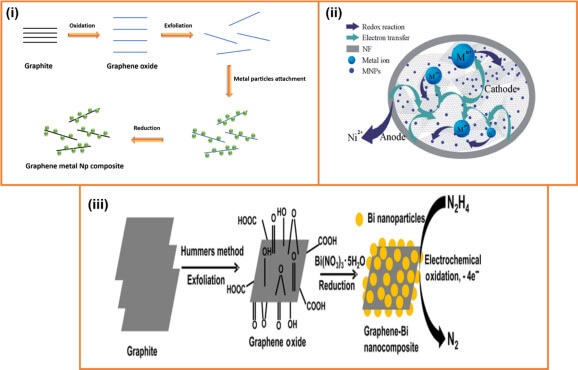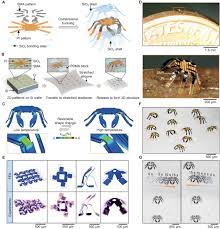Table of Contents
Introduction
In the realm of cutting-edge robotics and medical technology in Plant based , a remarkable breakthrough has emerged, ushering in a new era of innovation. A dedicated team of researchers from the University of Waterloo has crafted a series of ingenious and forward-thinking materials poised to become the cornerstone of a future generation of soft medical microrobots. These miniature marvels have the potential to revolutionize the field of medicine by enabling minimally invasive procedures such as biopsies, cell and tissue transport, and various other tasks within the human body.
The Birth of Soft Medical Microrobots
Measuring a mere one centimeter in length, these diminutive soft robots are designed to be biocompatible and non-toxic, ensuring their compatibility with the human body. However, what truly sets them apart is their composition – they are constructed from advanced hydrogel composites that incorporate sustainable cellulose nanoparticles derived from plants. This revolutionary research, led by the ingenious Professor Hamed Shahsavan from the Department of Chemical Engineering, offers a comprehensive approach to the design, synthesis, fabrication, and manipulation of these micro-scale robots.
The Magic of Advanced Hydrogel Composites
One of the key features of the hydrogel employed in this study is its ability to change shape when subjected to external chemical stimuli. This remarkable characteristic allows researchers to precisely control and program shape-changing, a fundamental capability for the creation of functional soft robots. As Professor Shahsavan puts it, “In my research group, we are bridging the old and new. We introduce emerging microrobots by leveraging traditional soft matter like hydrogels, liquid crystals, and colloids.” This blending of the conventional with the contemporary marks a significant step forward in the field of robotics and medical technology.

Self Healing: A Game Changer in Material Science
The uniqueness of these advanced smart materials doesn’t stop there. They possess the remarkable ability to self-heal, enabling a broad range of shapes and structures to be programmed into the robots. Researchers can cut the material and seamlessly reconnect it without the need for adhesives or glue, thereby allowing for the creation of customized shapes tailored to specific medical procedures. This self-healing property opens up a world of possibilities for the construction and application of soft robots in medicine.
Read More: Agrobotics a growing presence at RoboBusiness
Magnetism and Controlled Navigation
Moreover, the material can be further modified to incorporate magnetism, facilitating the precise navigation and movement of these soft robots within the human body. As a proof of concept, researchers successfully guided a tiny robot through a maze by manipulating its movement using a magnetic field. This innovative approach holds enormous promise for the targeted delivery of medical cargo to specific locations within the body.
Chemical Engineering: Pioneers of Medical Microrobotics
Professor Shahsavan emphasizes the pivotal role of chemical engineers in advancing the field of medical microrobotics, saying, “Chemical engineers play a critical role in pushing the frontiers of medical microrobotics research. Interestingly, tackling the many grand challenges in microrobotics requires the skillset and knowledge chemical engineers possess, including heat and mass transfer, fluid mechanics, reaction engineering, polymers, soft matter science, and biochemical systems. So, we are uniquely positioned to introduce innovative avenues in this emerging field.” The intersection of chemistry and robotics is indeed a dynamic space where groundbreaking discoveries are taking place.
The Future: Scaling Down to Submillimeter Robots
Looking ahead, the next phase of this remarkable research project involves scaling down these robots to submillimeter sizes. This ambitious endeavor promises to open up new horizons for the application of these tiny soft robots in various medical procedures.

International Collaboration: A Global Endeavor
Professor Shahsavan’s research group collaborated with other distinguished scholars, including Professor Tizazu Mekonnen from the Department of Chemical Engineering at the University of Waterloo, Professor Shirley Tang, Associate Dean of Science (Research), and Professor Amirreza
Conclusion: A Bright Future for Medical Microrobotics in Plant based
the creation of these plant-based, self-healing soft robots marks a significant milestone in the world of medical robotics and materials science. Professor Shahsavan and his team’s innovative approach to blending traditional soft materials with emerging technologies has the potential to reshape the future of medical procedures. The ability to precisely control the shape and movement of these robots, coupled with their biocompatibility and self-healing properties, positions them as a game-changing technology in the medical field.
As this research progresses and the robots are scaled down to submillimeter sizes, we can anticipate a future where these tiny soft robots become invaluable tools for medical professionals, enabling safer and more effective treatments within the human body. With the world of medical microrobotics at the cusp of a revolution, these plant-based robots are undoubtedly at the forefront of innovation. The potential applications are vast, from targeted drug delivery to minimally invasive surgeries, and their environmentally friendly composition adds another layer of significance to their development. The future of medicine is looking brighter with these tiny, sustainable, and versatile soft robots at the forefront of innovation.
1. What are soft medical microrobots, and what are their potential applications?
Soft medical microrobots are tiny, biocompatible, and non-toxic robots that have the potential to conduct minimally invasive medical procedures such as biopsies and cell/tissue transport within the human body.
2. What materials are these microrobots made of, and why are they unique?
These robots are made of advanced hydrogel composites that incorporate sustainable cellulose nanoparticles derived from plants. Their uniqueness lies in their ability to change shape in response to chemical stimuli and their self-healing properties.
3. How can the shape of these robots be controlled, and why is it essential?
Researchers can precisely control the shape of these robots by manipulating the cellulose nanoparticles within the hydrogel. This control is crucial for tailoring the robots to specific medical procedures.
What role do chemical engineers play in this research?
Chemical engineers are critical in pushing the boundaries of medical microrobotics research, providing expertise in heat and mass transfer, fluid mechanics, reaction engineering, polymers, soft matter science, and biochemical systems.
5. How do researchers guide these robots within the human body?
These robots can be modified with magnetism, allowing researchers to control their movement using a magnetic field. This feature enables precise navigation within the body.
6. What is the significance of using sustainable cellulose nanoparticles in these robots?
The use of sustainable cellulose nanoparticles aligns with global efforts to reduce the ecological footprint of materials. It makes the robots safer for use in the human body and promotes environmental sustainability.